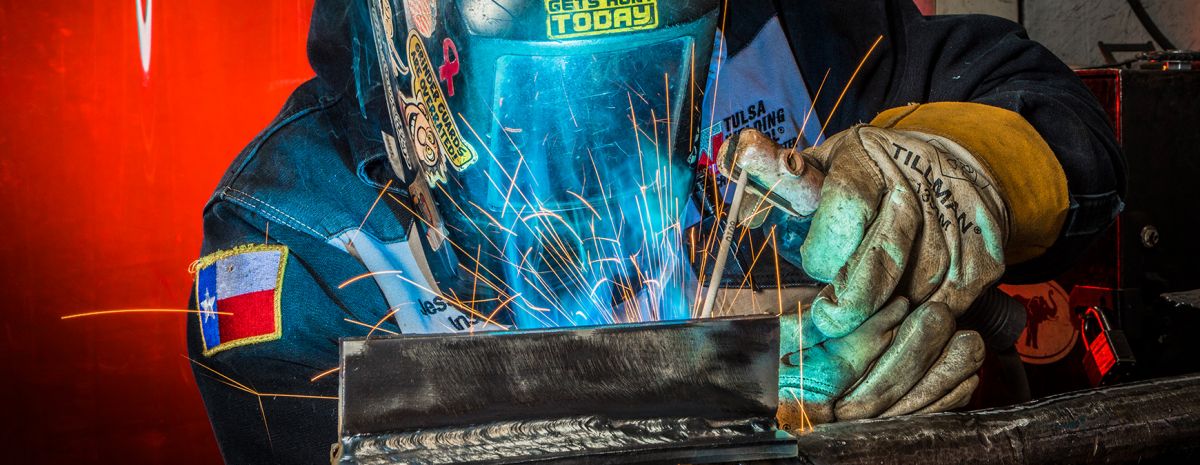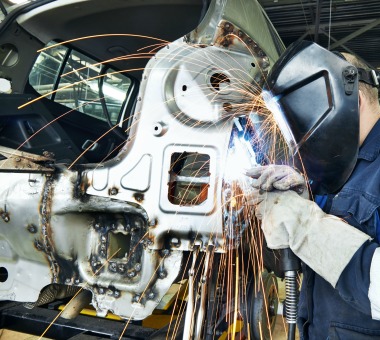All About Welding: Secret Insights Into Techniques and Ideal Practices for Success
Welding incorporates a selection of techniques, each suited for particular products and applications. Recognizing these methods, such as GMAW, SMAW, and TIG, is necessary for achieving perfect results. The appropriate tools and safety and security practices can not be neglected. As prep work and repairing play critical roles in the welding process, understanding these elements can substantially boost the quality of the end product. What are the crucial aspects that guarantee an effective weld?
Understanding Various Welding Methods
Welding strategies include a range of methods, each suited to certain applications and products. Among the most usual methods are Gas Metal Arc Welding (GMAW), Protected Metal Arc Welding (SMAW), and Tungsten Inert Gas Welding (TIG) GMAW, also called MIG welding, is prominent for its speed and versatility, making it optimal for slim materials. SMAW, or stick welding, is favored for its simpleness and effectiveness in outside environments, specifically with thicker steels. TIG welding supplies accuracy and control, making it suitable for detailed work and non-ferrous steels (Belgrade Welding). Each strategy has its one-of-a-kind advantages and considerations, allowing welders to select the most effective technique based upon the task's needs, material kind, and desired end results. Recognizing these techniques is important for successful welding
Essential Welding Devices and Tools
While numerous welding strategies need certain skills, the right equipment and tools are similarly crucial for attaining top quality outcomes. Important welding tools consists of welding equipments, which vary depending on the method-- such as MIG, TIG, or stick welding. Protective gear, including handwear covers, helmets, and aprons, guarantees safety and convenience during the procedure. Additionally, clamps and fixtures aid secure products in position, ensuring precision in welds. Consumables like welding rods, cable, and shielding gas are also critical parts that influence the top quality of the weld. Furthermore, devices such as cutters and grinders assist in surface preparation and post-weld ending up, adding to an expert result. Investing in premium devices inevitably improves the effectiveness and performance of welding jobs.
Safety Practices in Welding
Proper safety and security methods are important in the welding sector to safeguard workers from potential dangers. Welders need to use proper personal protective equipment (PPE), consisting of helmets with proper shading, handwear covers, and flame-resistant clothes. Ample air flow is vital to minimize exposure to harmful fumes and gases produced during the welding process. Furthermore, employees need to be learnt the right handling of welding devices to stop accidents. Fire security measures, such as maintaining combustible materials away from the welding location and having fire extinguishers readily offered, are required. Normal evaluations of tools and offices can aid determine possible risks before they cause crashes. By sticking to these safety methods, welders can develop a much safer working setting and reduce risks related to their trade.
Readying Materials for Welding
Preparing products for welding is a vital action that greatly affects the top quality and integrity of the final item (Montana Mobile Welding and Repair Belgrade Welding). Appropriate preparation entails cleansing the surface areas to get rid of contaminants such as rust, oil, and dirt, which can compromise the weld. Strategies such as grinding, sanding, or using solvents are typically employed to accomplish a clean surface. Additionally, making certain that the products mesh snugly is important; voids can bring about weak welds. It's additionally crucial to take into consideration the positioning and positioning of the elements, as this will influence the convenience of welding and the last outcome. Picking the suitable filler material and making certain compatibility with the base steels is vital for accomplishing solid, long lasting welds.
Tips for Getting High-Quality Welds
Accomplishing high-grade welds needs focus to information and adherence to finest methods throughout the welding procedure. Correct joint prep work is necessary, making sure surfaces are clean and free from impurities. Choosing the suitable filler product and welding strategy based upon the base steels is important for excellent bonding. Preserving regular traveling speed and angle while welding can advertise and avoid defects harmony. Additionally, regulating warm input is vital; excessive warmth can cause bending and deteriorated joints. If necessary, consistently examining the welds during the process permits for immediate changes. Ultimately, employing suitable post-weld therapies, such as cleansing and stress alleviation, can boost the sturdiness and integrity of the weld, ultimately ensuring a successful outcome.
Fixing Common Welding Issues
Welding frequently presents difficulties that can affect the high quality and stability of the final item. Common issues such as porosity, irregular weld beads, and getting too hot can occur, each calling for specific repairing methods. Comprehending these problems is vital for welders to boost their abilities and achieve ideal results.
Porosity Troubles Explained
Porosity can frequently be forgotten, it continues to be an essential issue in welding that can endanger the honesty of a finished item. Porosity describes the presence of small gas pockets within the weld bead, which can deteriorate the joint and lead to premature failure. This problem typically emerges from impurities, moisture, or improper securing gas protection during the welding process. To minimize porosity, welders ought to confirm that the base materials are tidy and dry, make use of ideal protecting gases, and keep consistent visit site welding parameters. Consistently inspecting the tools and atmosphere can additionally aid determine potential issues before they manifest in the weld. Attending to porosity successfully is important for attaining solid, resilient welds that meet high quality requirements.

Irregular Weld Beads
Inconsistent weld grains can greatly influence the top quality and stamina of a finished product. Numerous elements add to this concern, including incorrect travel rate, wrong amperage setups, and irregular electrode angles. When the welder relocates too swiftly, a bead might appear slim and do not have penetration, while relocating also slowly can create excessive accumulation. Furthermore, making use of the incorrect amperage can lead to either damaging or excessive spatter, both of which concession weld integrity. The welder's technique, such as inconsistent torch motion, can additionally cause uneven bead look. To mitigate these problems, welders need to concentrate on maintaining consistent, controlled motions and making sure correct devices setups to accomplish harmony in their welds. Consistency is key to achieving solid and trustworthy welds.
Overheating and Warping Issues
Extreme warm throughout the welding process can cause considerable overheating and deforming problems, influencing the structural stability of the workpiece. These troubles often manifest as distortion, which can endanger alignment and fit-up, best home welder making more setting up testing. Aspects adding to overheating consist of the choice of welding specifications, such as voltage and travel rate, along with the kind of product being welded. To mitigate these issues, welders need to keep consistent travel rate and appropriate warmth input while checking the work surface temperature. In addition, pre-heating or post-weld warmth treatment can help ease tensions triggered by fast cooling - Belgrade. Routine inspection and adherence to best practices are important in avoiding overheating and ensuring the long life and reliability of welded structures
Frequently Asked Inquiries
What Are the Occupation Opportunities in the Welding Industry?
The welding sector provides diverse profession possibilities, consisting of positions as welders, educators, examiners, and engineers. Professionals can operate in production, building, aerospace, and automotive markets, gaining from solid demand and competitive wages in various duties.
How Can I Boost My Welding Speed Without Sacrificing Top Quality?
To improve welding speed without sacrificing high quality, one should practice efficient strategies, preserve devices, enhance setups, and enhance hand-eye control. Normal training and looking for responses can also significantly add to accomplishing quicker, high-quality welds.
What Certifications Are Readily Available for Welders?
Various certifications exist for welders, including those from the American Welding Culture (AWS), the National Facility for Construction Education And Learning and Research Study (NCCER), and different industry-specific companies. These credentials enhance employability and demonstrate skill proficiency.
Just How Does Welding Affect the Properties of Metals?
Welding influences the homes of metals by altering their microstructure, which can bring about changes in toughness, firmness, and ductility. Warm input and cooling prices during the process substantially affect these material attributes.
Can I Weld Dissimilar Metals With Each Other?

Comments on “How temperature control can do for distortion prevention in Montana Mobile Welding and Repair Fabrication”